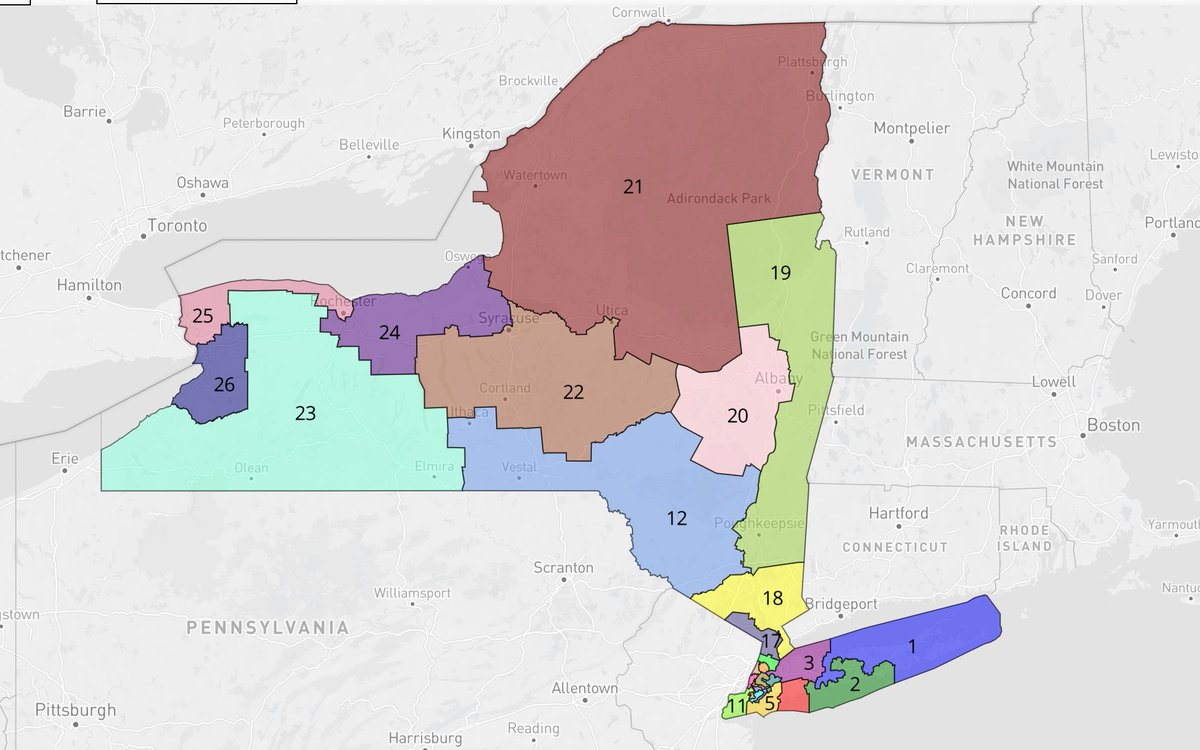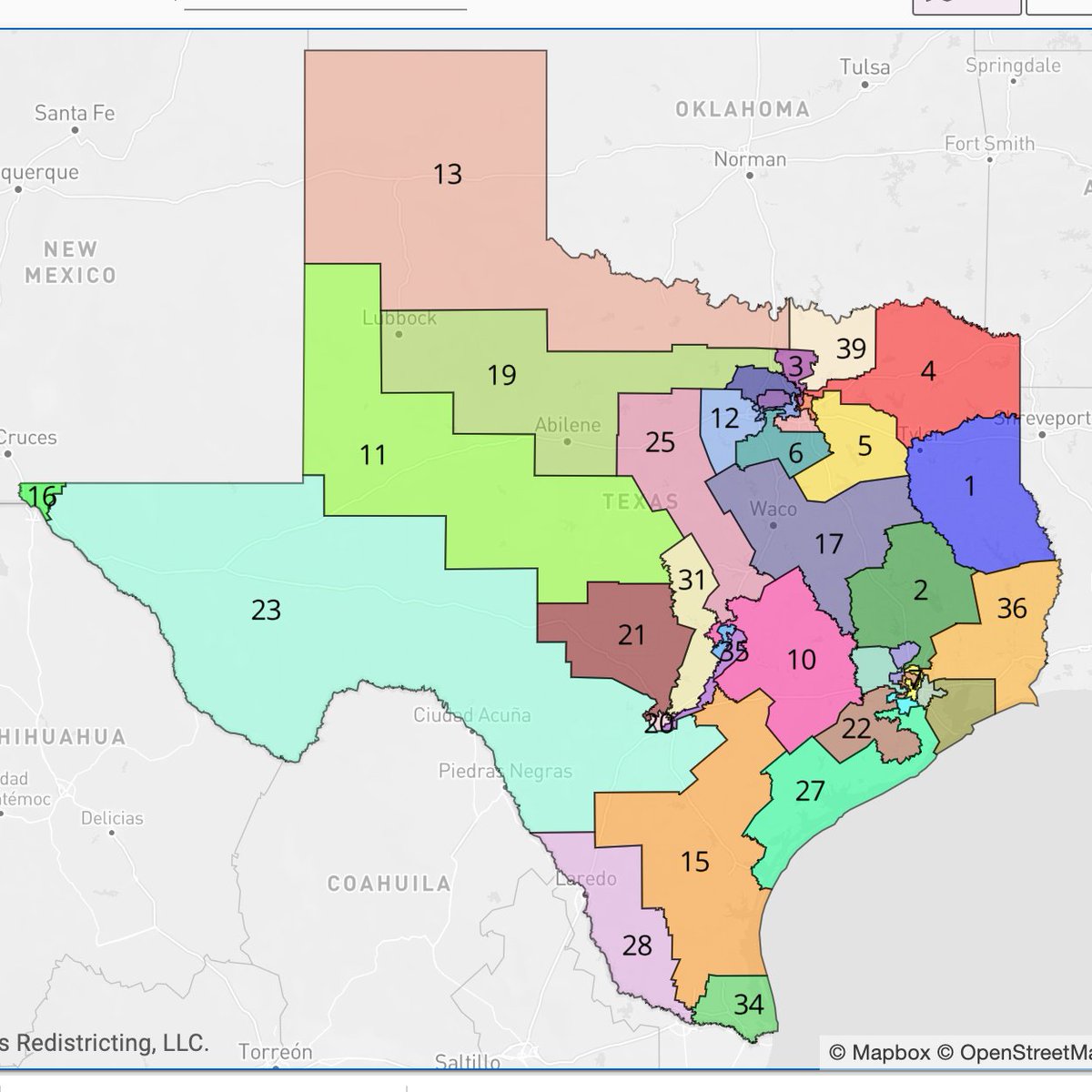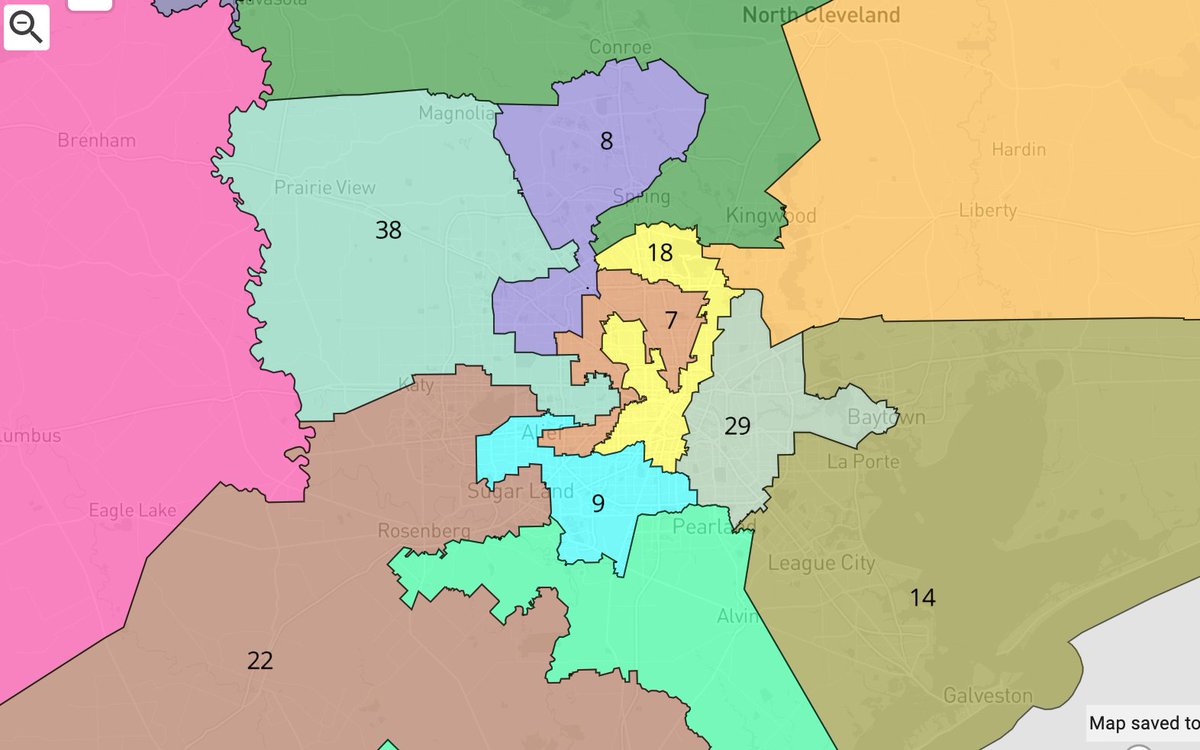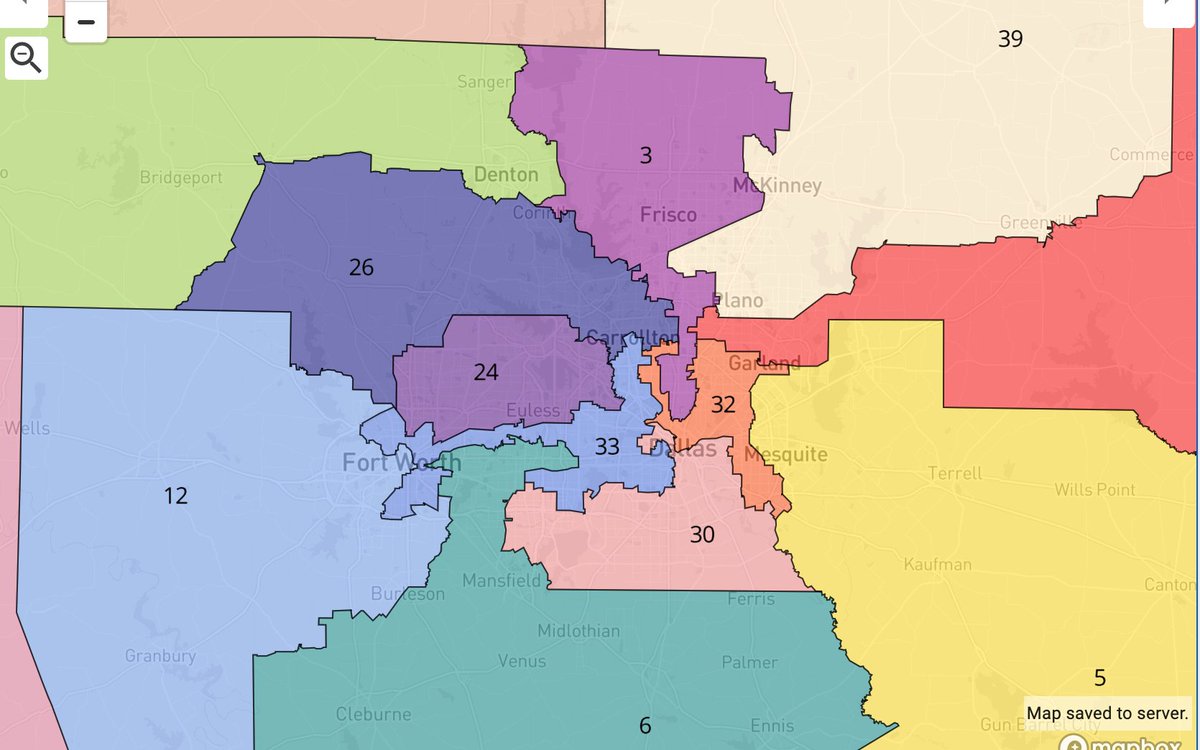
ARIZONA: is poised to add a seat, its 7th straight decade with a gain. Perhaps fittingly after last decade's chaos, the commission has chosen a psychologist/life coach as its chair. For reference, the current map (5D, 4R) is below... 

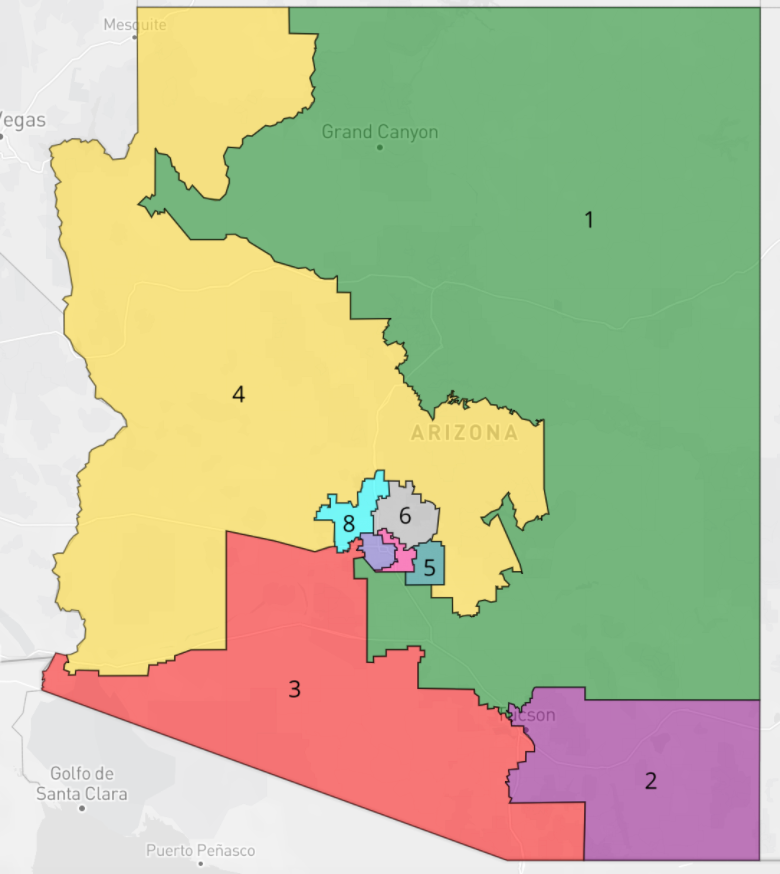

Even though AZ is gaining a 10th seat, there are a few incumbents at considerable risk of an adverse redraw: #AZ01 Rep. Tom O'Halleran (D), as well as Reps. David Schweikert (R) #AZ06 and Debbie Lesko (R) #AZ08. Full analysis at @CookPolitical. cookpolitical.com/analysis/house…
Republicans will likely push for more *compactness* - including putting Mohave Co. in #AZ01, which could doom O'Halleran (D) as well as creating a new R-heavy #AZ10 anchored by fast-growing Pinal Co., possibly converting 5D-4R to 6R-4D (below). 

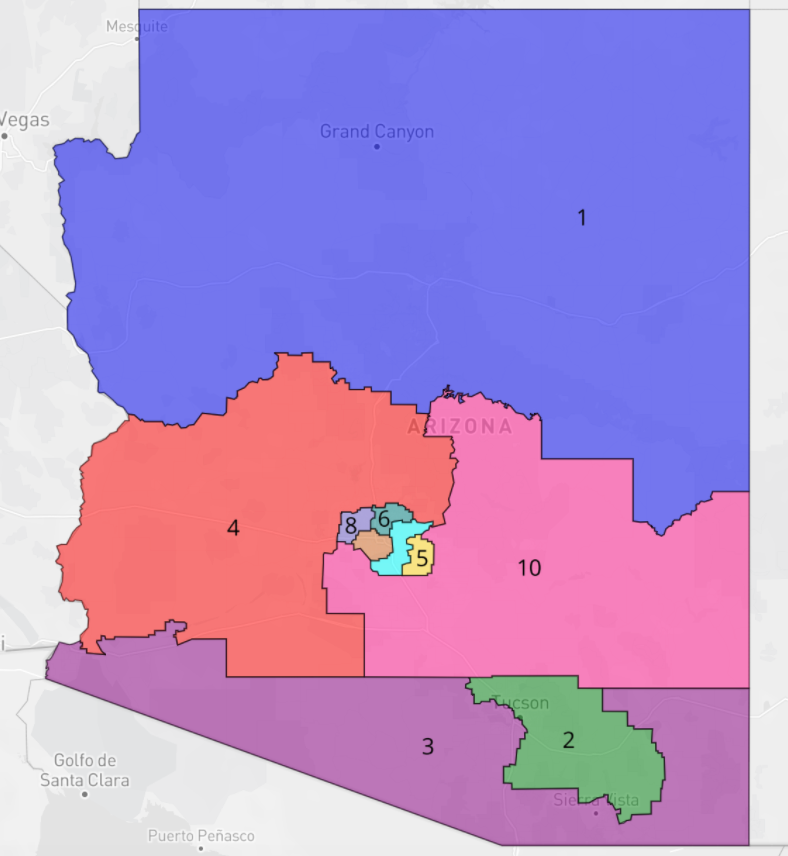

By contrast, Ds will once again emphasize *competitiveness.* In the below scenario, #AZ01 retains all its tribal lands and stays competitive, a swingy new #AZ10 arrives in Scottsdale, and up to *six* seats are competitive - potentially making AZ ground zero for '22 House control. 

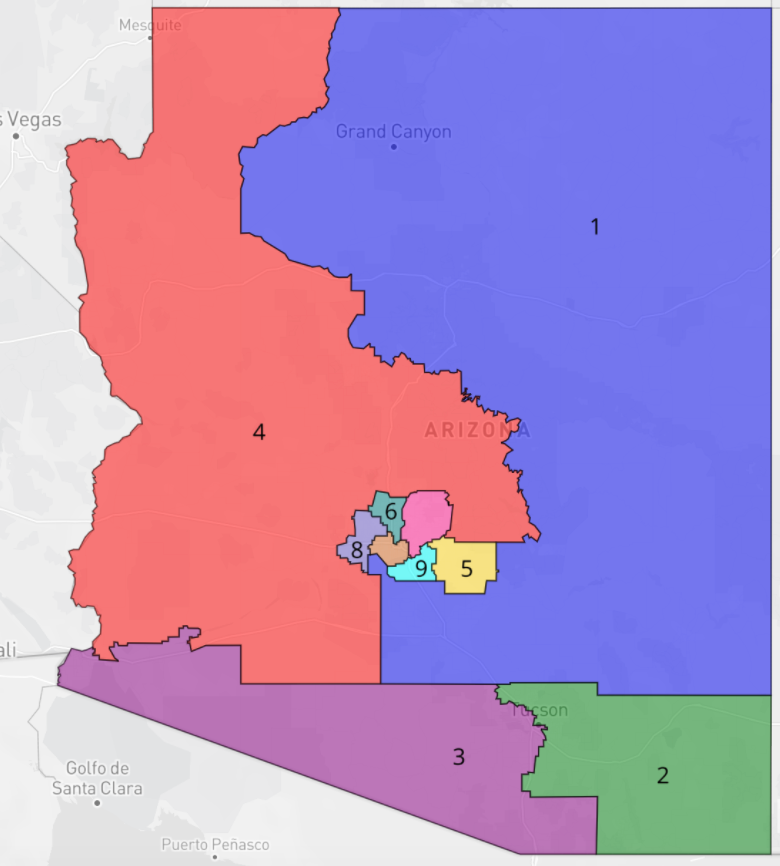
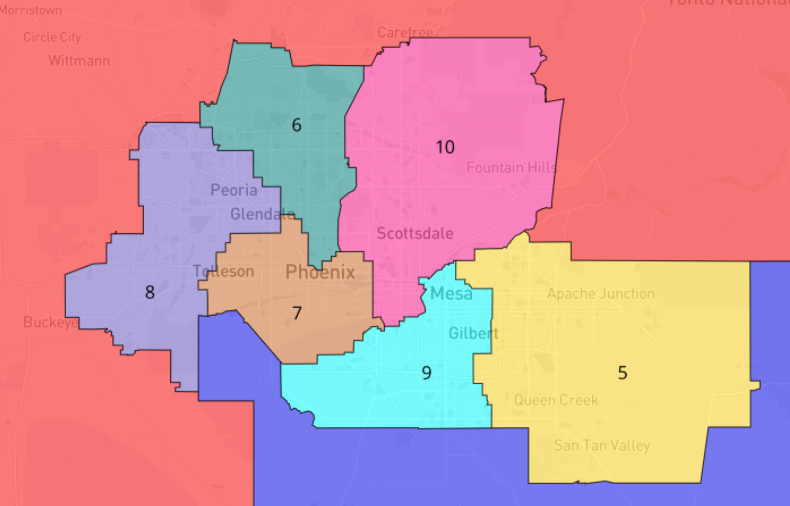
To clarify, yes - the new chair of AZ's commission, Erika Schupak Neuberg, is a tie-breaking independent. But the other four members are all partisan appointees - two Dems, two GOP. This isn't going to be a smooth ride.
• • •
Missing some Tweet in this thread? You can try to
force a refresh

